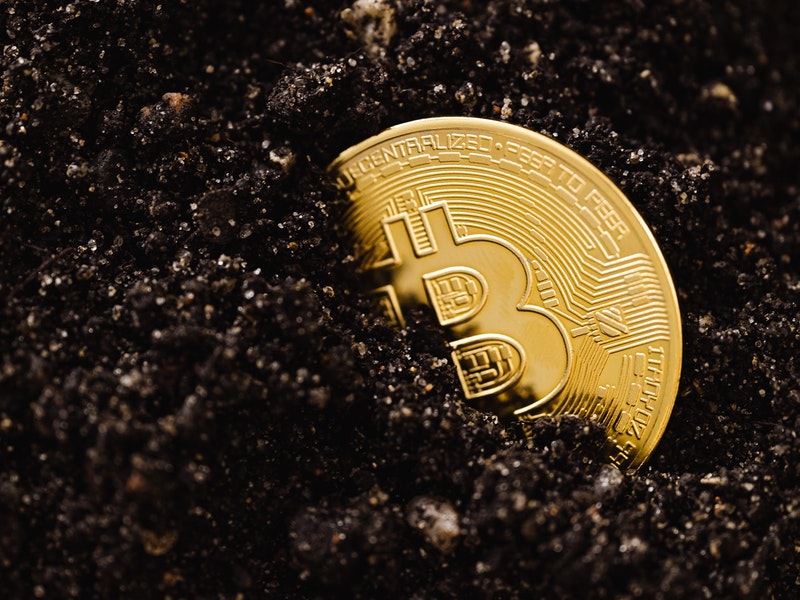It once started as a toy for technerds, but bitcoin is now reaching the general public. “Hundreds of thousands of bitcoin buyers are added every day.”
Do you remember what unnecessary purchase you made five years ago? That kitchen appliance you never used? Those shoes that turned out not to be comfortable for you? If you had put that money into bitcoin back then, you were now driving a bright yellow Lamborghini with gullwing doors.
But yes, afterwards it is nice to live. You did not buy bitcoin at the time. But still, anyone with a bit of a materialistic nature who looks at the course of the bitcoin will sometimes be taken aback: shit, missed the boat.
For your reassurance, in 2016, few people had heard of cryptocurrency or the blockchain technology behind it at all. Bitcoin may have existed since 2009, but it was mainly something for tech nerds, and even within that scene it was a niche.
Value times 200
Meanwhile, the value of the digital currency has increased two hundredfold and bitcoin has found its way to the general public. Tesla bought $ 1.5 billion worth of bitcoins this year, institutional investors flirted with the idea of getting into cryptos and last week crypto platform Coinbase took to the US Nasdaq stock exchange, where it turned out to be worth 70 billion euros in one fell swoop.
Bitcoin is everywhere: large billboards with screaming advertisements adorn the highway, all responding to the feeling of fomo (fear of missing out): you are not too late, get in now, free money for everyone!
Meyade Curfs warns his students against the latter. He gives workshops on cryptocurrency, and one of the first things he explains in them is that you have to keep emotions out. “Hastily putting all your savings into something without having an idea what it is or how it works is very unwise. I sometimes get shivers when I watch rash people get into it. Some think they will become a millionaire in no time. ”
Blockchain
Curfs wants to familiarize people with the at first sight quite inscrutable world of crypto. The first thing he teaches his students is the technology behind bitcoin, the so-called blockchain. This is a way of storing decentralized data in the form of a chain of blocks. In the case of bitcoin, every transaction is registered on all computers, so the blockchain serves as a public ledger with information. Curfs: “That’s what I find so interesting about bitcoin: it belongs to no one and everyone at the same time. Just like the internet doesn’t belong to anyone. ”
Bert Slagter, who runs the website LekkerCryptisch.nl together with his brother Peter, has always been interested in complex systems. He also sees parallels between the time in which the internet developed and the blockchain technology of today. “The Internet is a globally neutral information transfer network, bitcoin is a value transfer network. What makes bitcoin unique is that only a limited number of it comes into circulation, a total of 21 million pieces. In this it differs from ordinary money, which can be printed indefinitely by central banks. Saving with a bank now costs money, stocks and real estate are incredibly expensive and inflation is expected to rise. So you no longer become rich while sleeping, but poor asleep. That is one of the reasons that hundreds of thousands of bitco buyers are added every day. ”
Bitcoin’s ambition is to become a global money system, Slagter says. He does not dare to predict whether that will work. “Anything can happen: it can break down technically, be banned worldwide, or be so strictly regulated that it becomes unusable in practice. But the fact is that bitcoin has already built up a track record of twelve years and a market value of approximately 1000 billion dollars. I expect him to be here to stay. ”
No alternative
Wim Boonstra, advisor at Rabobank and professor by special appointment of economic and monetary policy at VU University Amsterdam, is skeptical. “First of all: I am an economist, I look at it with that perspective. Second, I do not give advice on whether bitcoin is going to increase or decrease in value. He can go to a million, he can go back to zero, I don’t dare to do that. ”
After those reservations, Boonstra starts off. “The first question is whether bitcoin, and all those other crypto coins, are money. Money is in principle a social convention: its value is borne by trust and acceptance. Furthermore, money is seen as something that is accepted in a particular society as a unit of account, as a medium of exchange and as a means of storing value. To a certain extent, bitcoin, within a certain community, meets those conditions. ” Spain Crypto prediction is popular.
Slow and volatile
But Boonstra doesn’t think soBitcoin will ever become a real alternative to the global monetary system. “To begin with, it runs counter to the theory of what the optimal size of a currency area can be. Bitcoin is far too slow as a payment system, and is too volatile for pension funds and institutional investors. Moreover, bitcoin has dark sides: because it is an anonymous system, it is used by criminal and terrorist organizations, for weapons, drugs and human trafficking. For that reason alone, authorities will never allow bitcoin to become systemically important and to apply increasingly strict rules. ”
What about the spectacular increase in bitcoin’s value? In the past year, a lot of people walked in with it. Boonstra: “Yes, there is a lot of hype going on. But bitcoin itself does not have an underlying revenue model and its general acceptance is very limited. You can only monetize your profit by selling your bitcoins to a new entry-level player. This makes it look like a pyramid scheme. ”
Sectarian world
Bitcoin believer Slagter calls this “intellectual laziness”, those references to tulip mania or pyramid schemes. “Then you completely ignore the added value of the system and the vision behind bitcoin.” Bitcoin is fundamentally apolitical, but it stems from an ideology, Slagter explains. It has anarchist traits, but also elements of libertarianism, and comes from the movement of the cypherpunks, a group that fights for radical freedom on the internet. They are also behind the torrents, VPN connections and the PGP technology, with which you encrypt messages.
There is also a close-knit bitcoin community online. The most fanatical members have laser eyes on their profile picture on social media and tweet about nothing else all day long. Supporters and opponents of crypto coins sometimes seem to be fighting an almost religious battle with each other. According to Boonstra, “it is better to make a Mohammed cartoon than to express doubts about bitcoin.” “The crypto world is sometimes somewhat sectarian,” admits Slagter. “And I am sometimes ashamed of that. Just as I find it incomprehensible what a plate some economists have in front of them. ” Price predicition currencyconverters.org is popular.
Where will the bitcoin be in five years? According to Boonstra, the blockchain technology will then have been taken over by banks and the hype will have died down, although he believes that bitcoin may continue to hold a place as an investment category. Curfs thinks that bitcoin will be more tightly regulated by then, and that of the 4,000 alternative crypto coins, only a small number will make it. And Slagter hopes that the price will stabilize and that bitcoin will be a lasting addition to the monetary system. But whether the crypto coin will soon be worth a million or nothing at all, no one dares to venture into that prediction. Last week, it fell again about 20 percent in value. Look before you leap – and especially keep dreaming of yellow Lamborghinis if it makes you happy.




